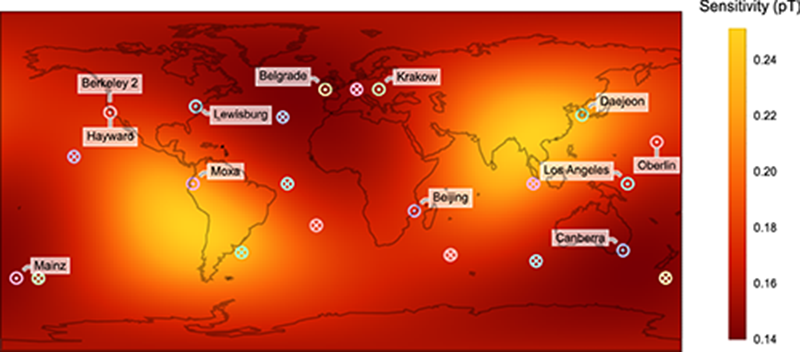EPJ D Highlight - Assessing and optimising the quality of sensor networks
- Details
- Published on 25 January 2022

A new method for optimising the arrangements of complex sensor networks could lead to improvements in a variety of cutting-edge experiments: including the ongoing search for Dark Matter
Rather than using a single, centralised sensor to gather data, many experiments deploy multiple sensors in complex networks. This offers numerous advantages: including higher sensitivities and resolutions in experimental measurements, and the ability to catch and correct errors more effectively. Yet with all the complexities involved in managing each sensor, and collecting all of their data streams at once, it can be extremely challenging to determine how the sensors should be arranged to obtain optimal results. Through new research published in EPJ D, Joseph Smiga at Johannes Gutenberg University Mainz proposes a new way to quantify the quality of sensor networks, and uses his methods to suggest improvements to existing experiments.
Smiga’s discoveries could lead to improvements to measurements of vector fields, which map the varying magnitudes and directions of physical quantities in space. Sensor networks play a crucial role in these studies: allowing researchers to measure phenomena including gravitational waves, and subtle variations in Earth’s gravitational field. In addition, they are currently being used in the search for Dark Matter: the enigmatic substance believed to explain a large proportion of the universe’s overall mass, but which only weakly interacts with regular matter, making it notoriously difficult to detect directly.
One such experiment is the Global Network of Optical Magnetometers for Exotic physics searches (GNOME): containing a network of magnetometers positioned all across the Earth. The project aims to uncover exotic, as-yet theoretical vector fields associated with Dark Matter, which couple to the quantum spins of protons and neutrons – producing an effect similar to a magnetic field. In his study, Smiga describes a method for calculating the sensitivity of a sensor network. This allowed him to quantify how well its sensors are arranged; and subsequently, to suggest how networks should be optimised. By re-orienting the sensing directions of its existing magnetometers, his results suggest that the sensitivity of the GNOME network could be improved, compared with previous runs of the experiment.
J Smiga. Assessing the quality of a network of vector-field sensors. Eur. Phys. J. D 76, 4 (2022). https://doi.org/10.1140/epjd/s10053-021-00328-9




